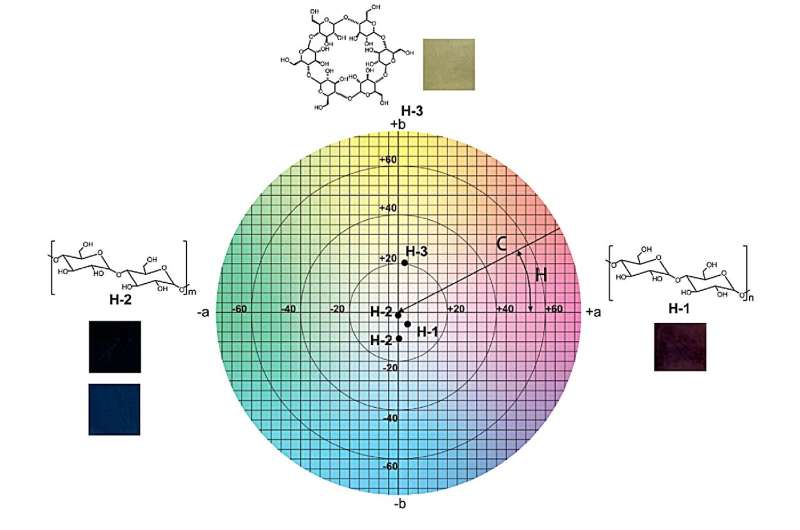
Smart windows are an exciting technology, capable of blocking out or letting in more light as needed, potentially reducing energy costs of large buildings by making them more efficient. This technology has already hit the market, but widespread adoption remains limited by cost and other factors.
A study from researchers at The University of Texas at Austin aims to solve these problems through a new type of electrochromic device and materials. The device uses common, low-cost, sustainable building blocks such as amylose, a natural polymer found in corn, potatoes and beans.
"There's an urgent need to develop novel sustainable electrochromic materials and devices with excellent properties for smart windows," said Guihua Yu, a professor in the Cockrell School of Engineering's Walker Department of Mechanical Engineering and the Texas Materials Institute.
"The biomass materials we extracted from corn, potatoes and other common sources enable the achievement of excellent optical properties, affordability, sustainability and easy preparation of electrochromic materials and devices. This potentially paves the way for the widespread use of smart windows."
The research is published in the Proceedings of the National Academy of Sciences.
Electrochromism is the ability to change colors. In the case of smart windows, the color change allows light to be filtered in or out based on heating and cooling needs. By applying a low voltage, the researchers showed the ability to decrease or increase the amount of light the device transmitted by more than 85% and modulate its transmission of ultraviolet, visible, and near-infrared spectra.
In experiments, the technology held up to more than six straight weeks of ultraviolet exposure, 1,200 cycles of use and 4,000 switches between light permeability. The simple, available materials, including a lack of metal ions or organic solvents, combined with a reusable, transparent electrode, played an important role in the discovery.
By electrically regulating the dynamic host-guest interactions between iodine and amylose, the researchers achieved the novel electrochromic system.
The market for smart glass, including smart windows and displays, is expected to reach $12.7 billion by 2030. However, this growth is held back by cost, with smart windows costing up to 10 times as much as standard energy-efficient windows.
Per the U.S. Department of Energy, buildings account for 39% of energy consumption in the U.S., and 35% of that comes through heating, ventilation and air conditioning.
"The need for more sustainable and energy-efficient building solutions has created a robust and growing market for smart windows," said Yuyang Wang, the lead author and a postdoctoral researcher working in Yu's lab. "It's exciting to transform well-known textbook knowledge into valuable potential products through clever design."
More information: Yuyang Wang et al, Sustainable, low-cost, high-contrast electrochromic displays via host–guest interactions, Proceedings of the National Academy of Sciences (2024). DOI: 10.1073/pnas.2401060121
Citation: How potatoes, corn and beans led to breakthrough in smart windows technology (2024, April 23) retrieved 23 April 2024 from https://techxplore.com/news/2024-04-potatoes-corn-beans-breakthrough-smart.html
This document is subject to copyright. Apart from any fair dealing for the purpose of private study or research, no part may be reproduced without the written permission. The content is provided for information purposes only.
